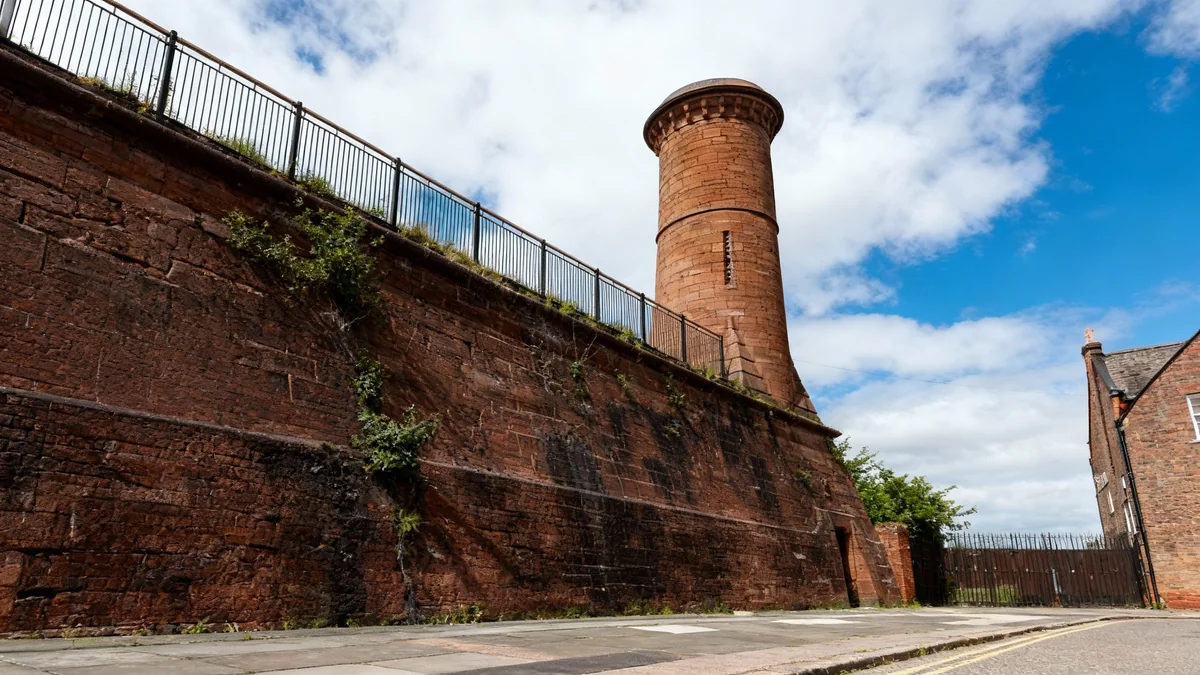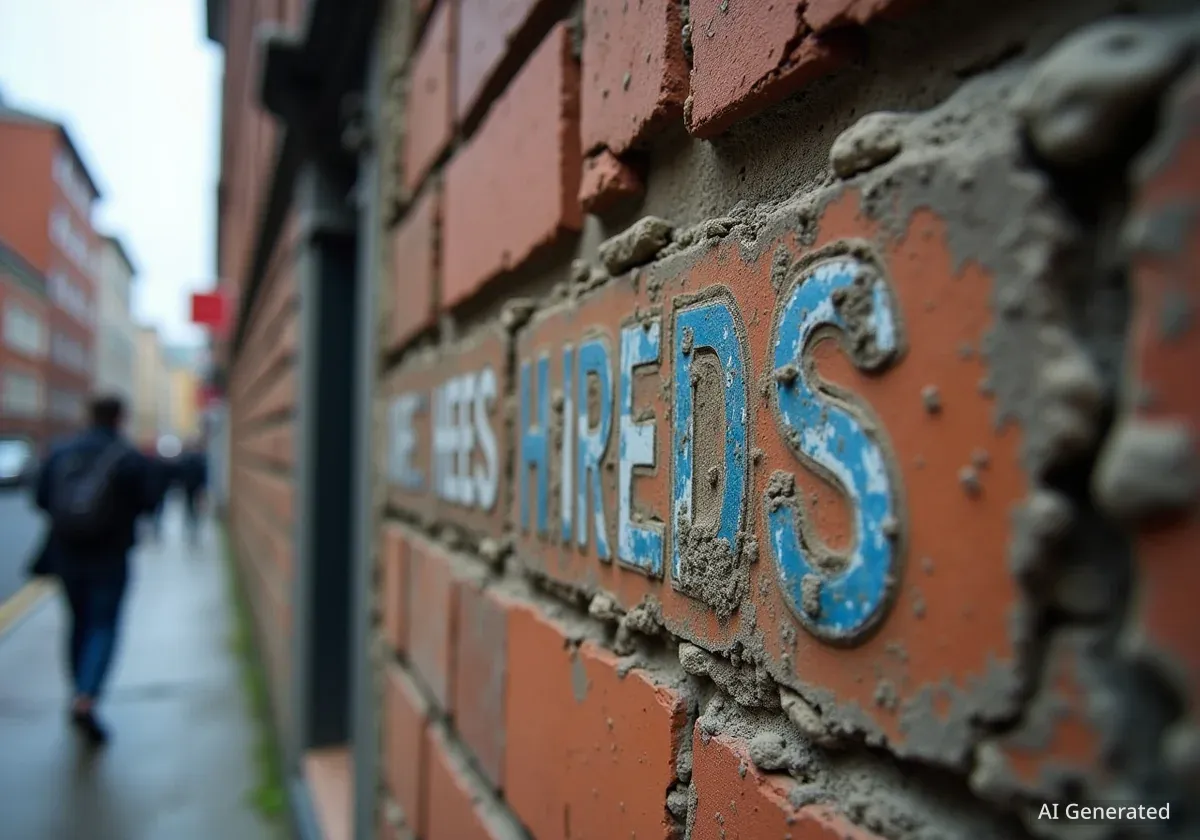A fortress-like structure on High Park Street in Toxteth holds one of Liverpool's most impressive hidden spaces. The Toxteth Reservoir, built in the Victorian era to supply the city with clean water, now serves as a unique cultural venue and a sought-after filming location for productions including the BBC's Peaky Blinders.
Key Takeaways
- Constructed in 1853, the Toxteth Reservoir was a critical piece of public health infrastructure designed to combat cholera outbreaks in Liverpool.
- The reservoir held approximately nine million litres of water and served the city for nearly 150 years before being decommissioned in 1997.
- Its interior features a vast hall with 96 cast-iron columns, giving it a cathedral-like appearance that has attracted filmmakers and artists.
- The site is now managed by a local trust and has been used as a location for TV shows like Peaky Blinders and cultural events such as the Liverpool Biennial.
A Victorian Solution to a Public Health Crisis
The Toxteth Reservoir was built by the Corporation of Liverpool in 1853 as a direct response to a severe public health crisis. During the mid-19th century, Liverpool's population grew rapidly, partly due to immigration from Ireland following the potato famine. This rapid urban expansion placed immense strain on sanitation and water supplies.
Outbreaks of diseases like cholera were frequent and deadly. City leaders understood that providing a reliable source of clean water was essential for public health and the continued economic growth of the port city. The reservoir was a pioneering engineering project designed to address this need.
Reservoir Capacity and Function
At its peak, the reservoir held around 1.75 million gallons (approximately nine million litres) of water at a depth of 12 feet. Its elevated position allowed it to distribute water under pressure to homes, businesses, and crucially, to the city's docks to fight fires.
For almost 150 years, this facility was a cornerstone of Liverpool's water infrastructure. The Victorian engineers who designed it created a structure so durable that it remained in continuous operation until it was finally decommissioned by United Utilities in 1997.
An Engineering and Architectural Marvel
From the outside, the reservoir presents an imposing facade. Its heavy sandstone block walls give it the appearance of a fortress, a common characteristic of Victorian municipal architecture which often emphasized strength and permanence. The main entrance, located at the base of a round tower on the southeast corner, features a heavy iron door. Above it sits a sculptured Liver Bird, a proud symbol of the city's civic identity.
A Change to the Skyline
The tower was originally topped with a small spire. However, after being struck by lightning in the 1960s, the damaged spire was removed and replaced with a more modern Plexiglas dome, which remains in place today.
The Hidden Interior
While the exterior is impressive, the interior space is truly remarkable. Inside is a vast, cavernous hall often described as a 'cathedral of brick and iron'. The roof is supported by a forest of 96 slender cast-iron columns, which rise to meet a ceiling of vaulted brick arches.
The space is dark, atmospheric, and echoes with history. Despite its purely functional purpose, the attention to detail is evident. Remnants of its operational past, such as a series of iron valves and stone spillways, can still be seen along the southern wall. The original brick floor and asphalt lining, designed to keep the massive structure watertight, are also preserved.
A New Chapter as a Cultural Landmark
After being taken out of service, the future of the historic building was uncertain. However, the site was taken over by the Dingle 2000 Development Trust, a local social enterprise. The trust secured a 125-year lease from United Utilities with the goal of preserving the landmark and giving it a new purpose.
Their efforts have successfully transformed the reservoir from a piece of dormant infrastructure into a vibrant cultural asset. The building is now periodically opened to the public, most notably during National Heritage Week, drawing large crowds eager to see its stunning interior.
The unique atmosphere has made it a popular venue for arts and cultural events. It has hosted installations for the Liverpool Biennial, including a memorable laser light show that attracted thousands of visitors. In 2018, it was a key venue for the Aurora project, an immersive light and sound experience marking ten years since Liverpool was European Capital of Culture.
From Water Supply to Film Set
The cinematic quality of the reservoir's interior has not been overlooked by television and film production companies. Its dramatic, column-filled hall has provided a ready-made backdrop for a variety of scenes, making it one of Liverpool's most versatile filming locations.
Its most famous appearance was in the globally popular BBC series Peaky Blinders. The atmospheric space was a perfect fit for the show's gritty, historical aesthetic. According to location managers, the reservoir's unique look provides a production value that is difficult to replicate in a studio.
Other productions filmed within its walls include:
- The BBC drama Florence Nightingale
- ITV's school series Grange Hill
- A children's Dracula movie, also for ITV
Today, the Toxteth Reservoir stands as a powerful symbol of Liverpool's history. It is a monument to Victorian ingenuity that has been successfully repurposed to serve the city in a new way, preserving its heritage while contributing to its modern cultural and creative industries.





